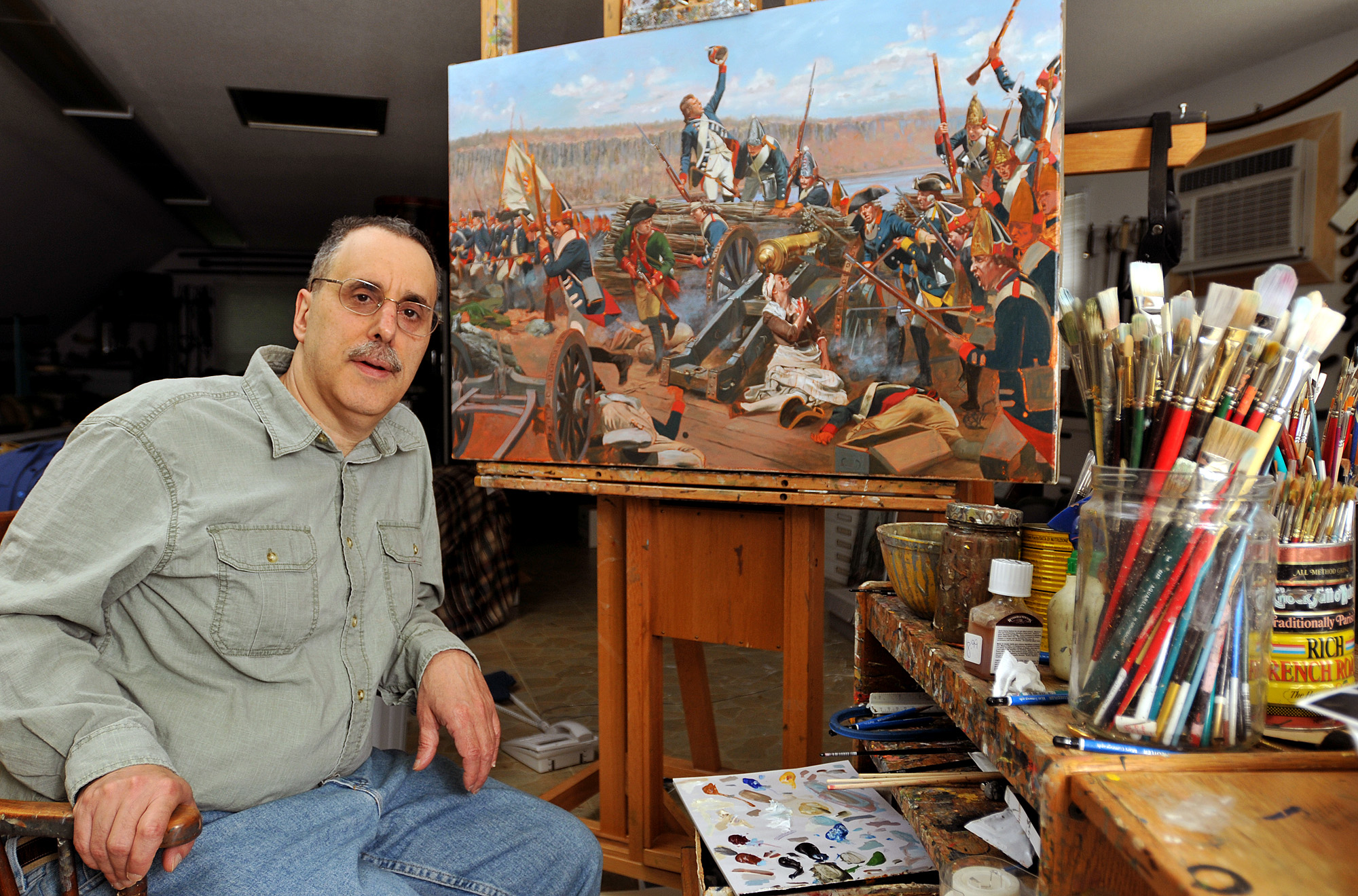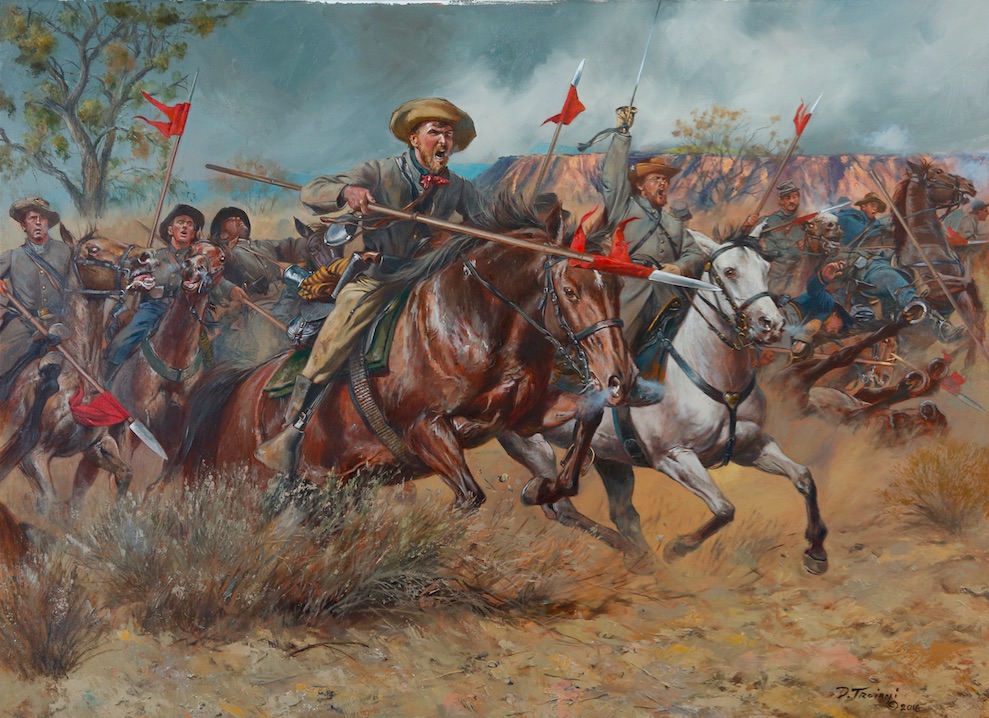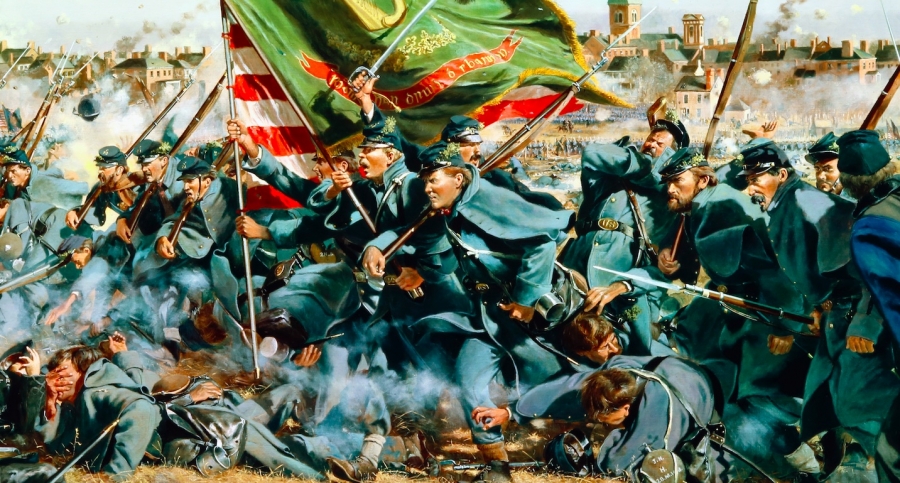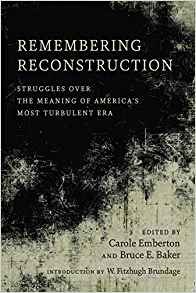
Don Troiani in his Connecticut studio
Last year, historical artist Don Troiani put the final brushstrokes on a painting called Valverde. The work captures the February 1862 lancer charge by Company B of the 5th Texas Mounted Rifles against a superior force of Union infantry in what is now New Mexico. As with all Troiani’s wartime depictions, the painting is so vivid it feels almost three-dimensional: The Confederate soldier at center, yelling and driving his lance forward, seems set to burst through the canvas, even as panicked men and horses behind him shrink back. But Valverde is remarkable for another reason. It could be the last Civil War painting that Troiani ever creates.
In Civil War circles, Troiani is a legend. He has made a career of bringing the conflict’s most iconic moments—everything from J.E.B. Stuart’s attack on the 11th New York at First Bull Run to the solemn Union salute of surrendered Confederates at Appomattox—into vibrant focus. Outside of period photographs, much of today’s visual record of the Civil War is Troiani’s creation. His work has been featured in countless books, films, and documentaries, and in more than 50 magazines. His paintings hang in the Pentagon, the Smithsonian, the Washington Monument, the National Civil War Museum, and dozens of national parks and battlefields.

Valverde, Don Troiani’s painting of the 5th Texas Mounted Rifles in action
It seems impossible, then, that America’s most respected historical artist would step away from portraying its greatest conflict. But Troiani, now 68, views it more practically. “I’ve done 35 years of Civil War paintings,” he says. “I think I covered it pretty good.”
Troiani never set out to be a Civil War expert. But his fascination with war started early. His father, a commercial artist, was a World War II veteran who saw heavy fighting at Metz and elsewhere, and Troiani grew up on his stories. When most kids were still drawing circles and rainbows, he was sketching soldiers—thousands of them. His parents were also avid antiques collectors, and later in his childhood they started dragging Troiani to auctions all over New England. “To keep me quiet, they’d buy me a Civil War sword or a Japanese rifle or whatever went cheap,” he recalls. Troiani wasn’t just hearing about war anymore; he was touching its remnants. Soon he was doing business of his own, selling World War II bayonets and Civil War pistols out of his school locker.
When he was in middle school, Troiani’s family took a trip to Paris. His parents dropped him for the day at the Army Museum, which houses one of the world’s largest military history and art collections. “There was nobody in the place, just all these muskets and uniforms and military paintings,” Troiani remembers. It was the paintings that gripped him. Most were created by the great French academic painters and military artists of the 19th century, known for their precision and detail. Says Troiani: “I stared at them for hours, and I thought, God, I’d like to do that. Look at those things.” Troiani’s grades were dismal; his artwork wasn’t.
But in the late 1960s, when he attended art school, classical instruction was hard to come by. He spent most of his time in the school’s museum, planted in front of the Thomas Eakins and Winslow Homer paintings, learning from them instead. Troiani studied American military art as well, but he was surprised to find much of it rife with inaccuracy. “They didn’t carry that kind of musket, or the uniforms were wrong,” he explains. For Troiani, those blunders signaled an opportunity. “Nobody had ever done serious uniform and equipment reconstructions of these battles using all the known accounts.” His first chance came in the early 1970s during the buildup to the bicentennial of the Revolutionary War, when the National Park Service hired him to create illustrations for the event. Not long after that, he branched into the Civil War. It’s been the focus of about 70 percent of his work ever since.
For Troiani, just preparing to reconstruct one historical scene can take years. He starts by reading every known account of the moment he plans to depict, including eyewitness reports and postwar memoirs. He also researches weather and terrain, often walking the ground himself. (“Was there a fence across here? Were these trees there at the time? Were they that tall? Was the ground dusty? Was it muddy? What happened there before?”) He combs personal records for details like the color of each officer’s horse and hunts down surviving personal items. Then he researches the regiment as a whole. “What kind of guns were they carrying? Did they have new uniforms issued, or were they wearing stuff that was six months old? Same thing with the flag. Does it still exist? What condition was it in at the battle?” Troiani ticks off. “Then you do all that again for the opposing side.”
No detail is too small for Troiani. While working on a painting called The Men Must See Us Today, featuring the 124th New York’s struggle for Devil’s Den at Gettysburg, a historian who had studied the regiment in depth mentioned that its colonel’s aide-de-camp was wearing a college fraternity pin during the battle. Troiani tracked down the design of the pin, then carefully painted it in. “I figure if you’re doing historical paintings, people are trusting you to get it as accurate as humanly possible,” says Troiani, whose major works range in price from $40,000 to $55,000.
Achieving that level of accuracy relies, in part, on access to period artifacts: the same guns, uniforms, saddles, swords, and other accouterments worn or carried by the soldiers Troiani depicts. For most paintings, Troiani poses models—gaunt guys he finds through newspaper ads or Facebook—outside his Connecticut home to create an approximation of the scene he aims to paint. Having them hold real Civil War objects helps Troiani capture fine details—the way the weight of a rifle musket pulls down a shoulder, or just how much a slouch hat slouches—that make his work even more precise. It’s not surprising, then, that over the years Troiani amassed a vast collection of thousands of Civil War artifacts, including 250 uniforms and three cannons. “Unless you have the real cannon,” he explains, “how are you going to figure out how shadows fall across the spokes?”

A detail from Don Troiani’s painting Clear the Way, which depicts the Irish Brigade at the Battle of Fredericksburg
To exasperate Troiani, just present him with a historical inaccuracy. In 2003, he was hired as a uniform and equipment consultant for the film Cold Mountain. Initially, the filmmakers just wanted to make uniforms from his patterns, but Troiani was soon bombarding them with advice and corrections. After spotting a slew of inaccuracies in a scene where a group of Confederate soldiers make breakfast, Troiani sent recipes for the food they would have been eating, along with photos of period-correct utensils. To illustrate what a Confederate camp would have looked like, he built brush shelters in his yard and sent photos of them, too. “You just couldn’t stop it all,” he says of the errors. A decade earlier, Troiani designed three Civil War battlefield coins for the U.S. Mint, including a half-dollar featuring a drummer boy. When the Mint’s sculptor wanted to change the roping on the drum, every detail of which Troiani had painstakingly researched, “I blew my stack,” he recalls. (They changed it back.) He is hard on his own work as well. He can’t look at any of his paintings without spotting something he wants to fix or change. “All I see is what’s wrong,” he admits. It’s why he keeps none of his original work.
That includes Valverde. Soon after the painting was finished, Troiani sold the bulk of his Civil War artifact collection to the United States Army Center of Military History—more than a thousand items altogether, including rarities like nine Zouave uniforms and a pair of Civil War underwear. The only things he kept were some guns, some swords, and the cannons. “I don’t think the Army needed them anyway,” he figures. The collection will be incorporated into the future National Museum of the United States Army.
The sale gave Troiani the freedom to pick what he paints, and what he wants now is to stretch his brush further back in time, to the Revolutionary War. “It’s always been my favorite period,” admits Troiani, who once published an entire book on American Revolution military buttons. Currently he is working on a large painting of the Boston Massacre and has two Revolutionary War books in the works. (His final Civil War book, a four-year project on uniforms called Civil War Soldiers, will be released in early summer.) “My goal is to do all the major Revolutionary battles, especially if there are no accurate depictions,” he says. “I want to create the great scenes of America’s past.” Could that same impulse compel him, at some point, to return to the Civil War? Unlikely, he says. “But I won’t say never.”
Jenny Johnston is a freelance writer and editor based in San Francisco.
This article originally appeared in the Spring 2017 (Vol. 7, No. 1) issue of The Civil War Monitor.
